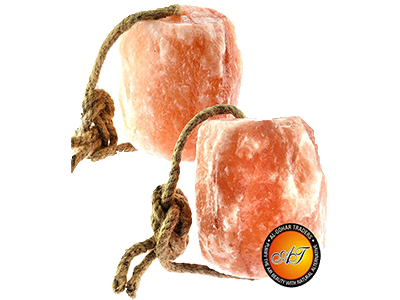Salt licks, also known as mineral licks, are essential tools for providing animals with critical nutrients. These blocks or natural deposits of salt are crucial in maintaining animal health, supporting wildlife, and aiding agricultural practices. In this comprehensive guide, we’ll explore the concept of salt licks, their types, applications, and significance.
Algohar World natural salt lamps that are believed to provide various benefits, combining both the aesthetic appeal and the potential health advantages associated with Himalayan salt lamps.
What Is a Salt Lick?
A salt lick is a block or natural deposit containing salt and minerals that animals lick to supplement their dietary needs. These licks are essential for both domesticated and wild animals, especially when their regular diet lacks specific nutrients.
Origins of Salt Licks
Salt licks have been around for centuries, with animals instinctively seeking them in the wild. Early human agriculturalists adopted the practice to support livestock health.
Composition of Salt Licks
Salt licks are primarily composed of sodium chloride, but they may also contain trace minerals like magnesium, potassium, calcium, and zinc, depending on their purpose and the target animal.
Types of Salt Licks
Natural Salt Licks
These are naturally occurring mineral deposits found in the wild. Animals are drawn to them instinctively, and they often become hotspots for wildlife observation.
Artificial Salt Licks
Man-made salt licks are crafted to cater to the specific needs of livestock or wildlife. These are available in various forms:
Solid Blocks: Compressed salt and minerals formed into blocks.
Loose Salt: Granular salt spread in feeding areas.
Mineral-Enriched Licks: Blocks infused with additional nutrients like iodine, selenium, or vitamins.
Specialized Salt Licks
Some licks are designed for specific purposes, such as enhancing milk production in dairy cows or providing extra energy for working animals.
Why Animals Need Salt Licks
Nutritional Requirements
Salt and minerals are vital for maintaining electrolyte balance, bone health, and overall physiological functions. For instance:
Livestock: Supports milk production, reproduction, and weight gain.
Wildlife: Assists in antler growth for deer and promotes healthy offspring.
Instinctive Behavior
Animals naturally seek out salt licks to satisfy deficiencies. This behavior ensures they consume the right amount without overindulgence.
Benefits of Salt Licks for Livestock
Improved Digestion
Salt stimulates saliva production, aiding in the digestion of fibrous diets commonly consumed by cattle and sheep.
Enhanced Productivity
Dairy animals produce more milk, and beef cattle gain weight more efficiently when their nutritional needs are met with salt licks.
Health Maintenance
Salt licks help prevent conditions like grass tetany, a magnesium deficiency common in grazing animals.
Salt Licks for Wildlife
Conservation and Observation
Salt licks are strategically placed in conservation areas to support wildlife health and facilitate ecological studies.
Antler Development
Mineral licks play a crucial role in antler growth for deer, elk, and moose by providing calcium and phosphorus.
Migration and Population Support
Salt licks encourage natural migration patterns and help sustain animal populations in resource-scarce regions.
How to Use Salt Licks Effectively
Placement
For Livestock: Place near water sources or feeding areas for easy access.
For Wildlife: Locate in natural clearings or paths to avoid overexposure to predators.
Selection
Choose the right type of salt lick based on the animal species and specific nutritional requirements.
Maintenance
Replace salt licks regularly and ensure they remain clean and uncontaminated by debris or moisture.
Environmental Impact of Salt Licks
Positive Effects
Salt licks can promote biodiversity by attracting various animal species to specific areas, enriching the ecosystem.
Note: salt lick are indispensable for maintaining the health and well-being of animals, whether in the wild or on the farm.
Potential Concerns
Overuse: Excessive salt licks in one area may disrupt soil salinity.
Predator Attraction: Wildlife salt licks may inadvertently lure predators.
Salt Lick Alternatives
Liquid Mineral Supplements
These can be added to water sources, offering a controlled way to deliver nutrients.
Enriched Feed
Salt and minerals can be incorporated directly into animal feed, ensuring consistent intake.
Cultural and Historical Significance of Salt Licks
Indigenous Practices
Salt licks have been vital for indigenous communities, aiding in hunting and sustaining livestock.
Historical Trade
In many regions, access to salt licks determined trade routes and settlement patterns, emphasizing their economic importance.
FAQs About Salt Licks
Can all animals use the same salt lick?
No, different species have varying nutritional needs. Always choose a salt lick formulated for specific animals.
Are salt licks safe for pets?
Salt licks designed for livestock or wildlife may not be suitable for pets due to differing mineral content. Specialized pet licks are available.
Do salt licks expire?
Salt licks do not spoil but can become less effective if exposed to contaminants or excessive moisture.
Economic Importance of Salt Licks
Salt licks are a low-cost investment with high returns for farmers. They improve livestock productivity, enhance meat and dairy quality, and reduce healthcare costs by preventing nutrient deficiencies.
Salt Licks and Sustainability
Eco-Friendly Production: Many manufacturers focus on sustainable mining practices.
Recycling: Some salt lick containers and packaging are recyclable, reducing waste.
Future Trends in Salt Lick Usage
Smart Salt Licks: Technology-integrated salt licks that monitor consumption and animal health.
Custom Mineral Blends: Tailored formulas to meet specific regional or seasonal needs.
Conclusion
Salt licks are indispensable for maintaining the health and well-being of animals, whether in the wild or on the farm. They provide essential nutrients, promote biodiversity, and contribute to sustainable agricultural practices. By understanding the appropriate types, uses, and placement of salt licks, we can ensure their benefits are maximized for both animals and the environment.
